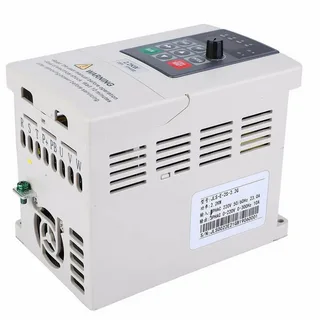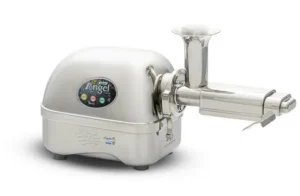Are you looking to get the most out of your Single Phase Inverter? Whether you are a homeowner with a solar panel system or a business owner with grid-connected inverters, maximising efficiency is key to saving money and reducing your carbon footprint. In this blog post, we will explore 12 tips and tricks to help you get the most out of your single-phase inverter.
Understanding Grid-Tie Inverters
Grid-tie inverters play a crucial role in harnessing solar energy, transforming your solar panels’ direct current (DC) into alternating current (AC), which is compatible with the household supply and can be fed back into the electrical grid. These devices enable homeowners to contribute excess electricity generated back to the grid, often receiving credits through net metering policies.
The seamless integration of grid-tie inverters with the grid supports the efficient use of renewable energy. It reduces overall energy costs, making them a fundamental component of any solar panel system. Their functionality underscores the importance of understanding the technical aspects and operational efficiency to optimise the energy production of your solar installation.
Grid-Connected Inverters: How They Differ
Grid-connected inverters distinguish themselves by being an essential component in larger-scale solar operations, such as those found in commercial or industrial environments. Unlike their residential counterparts, these inverters are engineered to manage considerably higher voltages and currents, making them apt for applications that demand a robust electrical infrastructure.
The capability to handle these increased demands is crucial for maintaining efficiency and reliability in systems that contribute significantly to the grid. By catering to the specific requirements of large-scale solar installations, grid-connected inverters ensure that renewable energy generation remains a viable and effective solution for meeting the energy needs of businesses and industries without compromising performance.
Single-Phase Inverters: An Introduction
Single-phase inverters are integral to residential solar systems, serving as the bridge that converts DC electricity from solar panels into usable AC electricity for homes. Their widespread use is attributed to their simplicity and effectiveness in small to medium-sized solar applications. Designed for straightforward installation and minimal upkeep, these inverters suit most domestic energy requirements.
Unlike their three-phase counterparts, typically employed in larger commercial settings, single-phase inverters are tailored for the everyday homeowner, balancing efficiency and cost. Their operation, central to the functionality of home solar setups, underscores the importance of understanding their role and capabilities within renewable energy systems.
Advantages of Using Single-Phase Inverters
Single-phase inverters appeal significantly to residential settings due to their cost-efficiency and straightforward installation process. They are adept at converting DC to AC electricity with high efficiency, making them perfectly suited for domestic energy needs. Their design caters to ease of use and low maintenance requirements, ensuring that homeowners can enjoy the benefits of solar energy without the burden of complex systems or frequent servicing.
Furthermore, these inverters complement most home solar installations’ scale, aligning with individual households’ financial and practical considerations. Their role in enabling sustainable energy solutions at a domestic level underscores their value in the broader push towards renewable energy adoption.
Efficiency Factors for Single-Phase Inverters
Various factors can significantly influence the performance of your single-phase inverter. Optimal selection of inverter quality is crucial, as it directly impacts the efficiency and longevity of the system. Additionally, the scale of your solar panel setup must align with the inverter’s capacity to prevent over or underutilisation.
Solar panel positioning is another critical consideration; their angle and orientation should be meticulously adjusted to capture maximum sunlight throughout the year. By addressing these key elements, you can enhance the operational efficiency of your inverter, leading to increased energy production and reduced energy costs.
Optimising Your Grid Tie Inverter
For optimal performance of your grid tie inverter, attentive monitoring of its output is pivotal. This vigilance enables the timely identification and rectification of performance dips or operational anomalies. Additionally, the cleanliness of solar panels can significantly impact their efficiency; thus, regular cleaning is advised to remove any debris or dust that could obstruct sunlight.
Moreover, periodically reassessing the tilt and orientation of your panels is beneficial, as it ensures they are positioned to capture the optimal amount of the sun across different seasons. Such adjustments can lead to a marked improvement in the inverter’s efficiency, directly influencing your solar energy system’s energy yield and effectiveness.
Troubleshooting Common Issues
Grid-connected inverters are crucial in converting the direct current (DC) from solar panels into alternating current (AC) for home or business use. However, they can encounter issues that affect performance. Here’s a guide to troubleshooting common problems.
Inverter Not Turning On
- Check Power Supply: Ensure that the inverter receives power from the solar panels and that all circuit breakers are on. A tripped breaker or a blown fuse might be the issue.
- Verify Connections: Inspect all connections between the inverter, solar panels, and the grid. Loose or corroded connections can prevent the inverter from functioning.
Low Output or No Output
- Examine Solar Panel Performance: Dirty or damaged panels can reduce energy input. Clean the panels and check for any physical damage.
- Inspect Inverter Settings: Ensure that the inverter settings are correctly configured for your system’s voltage and grid requirements. For proper settings, refer to the inverter’s manual.
Frequent Shutdowns
- Assess Overheating: Inverters can shut down to protect themselves from overheating. Ensure the inverter is installed in a well-ventilated area and that cooling fans are operational.
- Check for Fault Codes: Many inverters display fault codes when there’s an issue. Consult the user manual to interpret these codes and take corrective actions.
Grid Connection Issues
- Verify Grid Compliance: Ensure that the inverter meets local grid compliance standards. Incompatible inverters may not sync properly with the grid.
- Inspect Grid Voltage and Frequency: Grid voltage or frequency fluctuations can cause connection issues. If you suspect problems, check with your utility provider.
By systematically checking these common issues, you can often resolve problems with your grid-connected inverter and ensure efficient operation.
Grid Connected Inverter Maintenance Tips
Establishing a routine maintenance schedule is pivotal to ensuring your grid-connected inverter’s durability and optimal functioning. Regular checks should include inspecting for physical damage or signs of wear, which could impair its performance. Ensuring the inverter’s cooling system is free from obstructions is crucial to prevent overheating. Dust and debris accumulation on or around the Grid Connected Inverter should be cleared to maintain adequate ventilation.
Verifying that all electrical connections remain tight and secure can preclude potential electrical failures. Engaging a professional for an annual inspection can also unearth any underlying issues that may not be immediately apparent, safeguarding against unexpected downtimes. This proactive maintenance approach can significantly prolong your inverter’s lifespan, sustaining its efficiency over time.
The Future of Single-Phase Inverters
The trajectory of single-phase inverters is set towards heightened efficiency and technological sophistication, propelled by the burgeoning need for sustainable energy solutions. Innovations are anticipated to streamline these inverters for even greater user-friendliness and integration capabilities, especially in domestic settings.
The advent of smart technology and Internet of Things (IoT) connectivity will further enhance the functionality of single-phase inverters, enabling remote monitoring and management, thus facilitating a more responsive and adaptive solar energy system. This evolution will likely usher in a new era of energy independence for homeowners, aligning with global strides towards a greener, more resilient energy landscape.
Upgrading from a Single Phase to 3 Phase Inverter
Expanding your solar array or shifting towards a more robust power supply framework often necessitates transitioning from a single-phase to a three-phase inverter. This upgrade caters to those who require a more substantial electricity output, typical of larger residential setups or small to medium business operations. A Single Phase To 3 Phase Inverter seamlessly integrates into these environments by offering enhanced power distribution capabilities, thus reducing the load on each phase and improving overall system stability.
It’s a strategic move for those aiming to elevate their existing solar power system’s efficiency and capacity without compromising on the energy quality supplied to more demanding appliances and machinery. This upgrade is critical for scaling operations or increasing energy resilience in more extensive setups.
Expert Tips for Maximising Efficiency
To elevate your single-phase inverter’s efficiency, prioritise acquiring a top-tier model that guarantees optimal performance and durability. Ensure diligent oversight of its operational metrics, utilising monitoring systems to swiftly pinpoint any inefficiencies or deviations from expected performance levels. Emphasise the strategic placement and angling of solar panels to capitalise on solar exposure throughout the year, making adjustments as necessary to accommodate seasonal variations in sunlight.
Consider implementing smart technology solutions for real-time tracking and adjustments, enhancing the inverter’s responsiveness to changes in solar input and consumption demands. Additionally, engage in proactive maintenance practices, including regular inspections and cleanings, to preempt potential issues and preserve the inverter’s efficiency over time.
By adhering to these expert recommendations, you can significantly optimise the functionality and output of your single-phase inverter, contributing to a more sustainable and cost-effective energy system.
Conclusion and Final Thoughts
Wrapping up and enhancing your Single Phase Inverter efficiency is crucial for maximising the benefits of your solar energy system. By implementing the strategies and insights shared, you stand to improve performance, reduce costs, and contribute to a more sustainable energy solution. Keep a keen eye on how your system is faring, and don’t hesitate to seek expert advice when needed. With the right approach and maintenance, your inverter will serve as a cornerstone of your home’s renewable energy setup, ensuring you reap the rewards of your investment for years to come.
FAQs
1. What is the role of a Single Phase Inverter in a solar energy system?
A Single Phase Inverter converts your solar panels’ direct current (DC) generated into alternating current (AC) for use in your home. This transformation allows you to power household appliances and feed excess electricity into the grid. Single-phase inverters are ideal for residential solar setups, balancing efficiency and cost while providing domestic power.
2. How can I improve the efficiency of my single-phase inverter?
To enhance the efficiency of your inverter, ensure optimal placement and angling of your solar panels to maximize sunlight exposure. Regularly clean the panels to remove dust and debris that could reduce efficiency. Monitor your inverter’s performance using available tracking systems to identify and address inefficiencies. Additionally, invest in a high-quality inverter and perform routine maintenance to keep it functioning at its best.
3. What maintenance does a single-phase inverter require?
Regular maintenance for a single-phase inverter includes:
- Checking for physical damage.
- Ensuring proper ventilation to prevent overheating.
- Cleaning any dust or debris around the unit.
Inspect electrical connections for security and engage a professional for annual inspections to identify any potential issues early and ensure optimal performance.
4. When should I consider upgrading from a single-phase to a three-phase inverter?
Consider upgrading to a three-phase inverter to expand your solar array or require more substantial power output. Three-phase inverters offer better power distribution and efficiency for larger residential setups or small businesses, reducing the load on each phase and improving overall system stability.
5. How can I troubleshoot common issues with my grid-connected inverter?
Common issues include fluctuating power output, overheating, and error codes. Check for shading on panels, ensure proper ventilation around the inverter, and consult the manufacturer’s manual for error code meanings. If problems persist, inspect electrical connections for damage or loose wiring and seek professional assistance to resolve complex issues.




